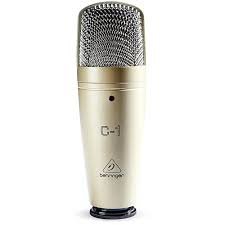All About Condenser Microphones

Condenser microphones are the most well-known kind of microphone utilized among recording studios. Condenser microphones are accurate and sensitive, but these are also pricey. Currently, condenser microphones have already lowered its price, and you can actually purchase one for around $200. The best quality ones would begin at $500.
So, why should you use condenser microphones?
Condenser microphones are capable to produce sounds that are much quicker of both instruments and vocals alike, enabling richer and clearer sound during recordings. In general, studio microphones are available in two unique options. So, continue reading this article for further information about condenser microphones.
About condenser microphones:
Condenser microphones are made up of very thin metal diaphragm, it functions to sense signals. The diaphragm that is suspended in front of a certain metal plate is called the backplate. Also, polarizing voltage is applied to the backplate and the diaphragm which makes a static charge between them. Whenever the diaphragm picks a sound, it would vibrate in between. This makes a tiny signal that could be amplified. Here is a MXL 770 Cardioid Condenser Microphone Review to learn more about.
Condenser microphones required a small quantity of voltage, just around 10 to 48 volts, in order for it to function. If you utilize a condenser microphone, you must make sure that it has an internal battery or a mixer which is equipped with phantom power.
Here are some of the things you must take into account when you choose a condenser microphone:
1. Solid or tube state - condenser microphones could be either vacuum tubes or solid state (aka transistors). But whatever you choose among the two, you should base your decision on the characteristics of sound that you prefer the most. In most instances, the tube condenser microphones generate a warm total tone. On the other hand, the solid-state microphones are more transparent, meaning that they capture the sound with less coloration. If you check out https://en.wikipedia.org/wiki/Ribbon_microphone, you can also read some more linked discussions about microphones.
2. Small or large diaphragm - condenser microphones are also available in two classifications which are the small and large diaphragm. The large diaphragm condenser microphones are more widely used in contrast to the small diaphragm condenser microphones. This is due to the fact that large diaphragm condenser microphones have lower frequencies or a "more pronounced bottom end". It also have a lower self-noise, this is the noise generated by the microphone itself.
Prior to purchasing a condenser microphone, you must also consider the small diaphragm microphones. The small diaphragm condenser microphones can capture instrument sounds (e.g. violin) in high frequencies. Contact us for more info.



